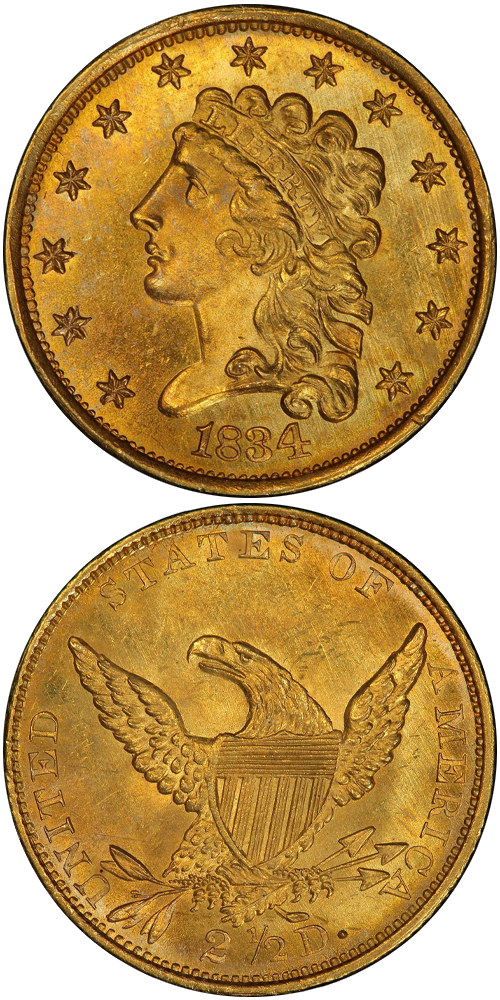1834 Classic Head Quarter Eagle
Struck pursuant to the Act of June 28, 1834, this is a superior quality survivor of the first "new tenor" gold coinage. By diminishing the weight standard for the new quarter eagle, the quarter eagle's intrinsic value was, at last, equal to two and a half dollars in American silver coins. It had been decades since gold and silver coins could circulate on the same footing, an imbalance that forced gold coins into a non-circulating role while American commerce was conducted with paper money, U.S. silver coins, and mostly worn-out foreign silver coins. The mintage of the 1834 Classic Head quarter eagle is 27 times greater than the mintage of 1833 old tenor quarter eagles but, rather than being exported or serving as bullion deposits in banks, the new coins actually circulated. Newspapers across the country excitedly reported seeing the new coins for the first time, publishing updates on mintage figures and hopeful editorials on what the "Gold Coinage Act" would mean for the American economy. Referred to by some as "Jackson Gold," the new tenor coins started appearing beyond Philadelphia in the late summer of 1834. Throughout autumn, more than $200,000 worth of gold coins were struck per week, consisting entirely of quarter eagles and half eagles, while the citizenry worried that too much of it was going to the banks and not enough into the pockets of regular folk. Of course, the Mint delivered coined gold to those who deposited gold for coining, and most depositors were banks. Much of the gold deposited by the banks was pre-1834 products of the United States Mint, for which the Mint paid a premium, guaranteeing the rarity of those coins for modern collectors.
The example to the left was sold by Stack's Bowers Galleries in the D. Brent Pogue, Part II Auction, where it realized $88,125.






